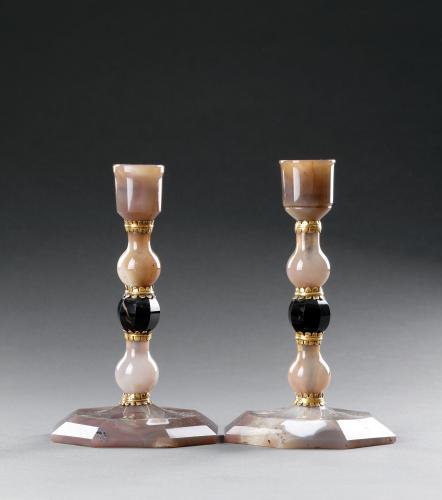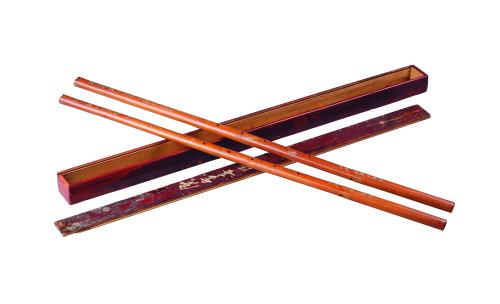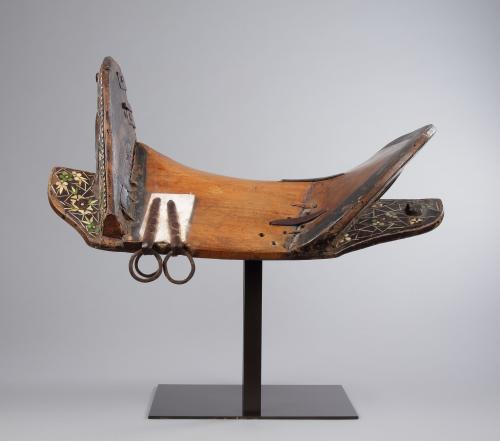






Price on application
This object is eligible for a Certificate of BADA Provenance
The BADA Standard
- Since 1918, BADA has been the leading association for the antiques and fine art trade
- Members are elected for their knowledge, integrity and quality of stock
- Our clients are protected by BADA’s code of conduct
- Our dealers’ membership is reviewed and renewed annually
- Bada.org is a non-profit site: clients deal directly with members and they pay no hidden fees
A Rare and Historically Important Artefact Recovered from HMS Adventure in 1775 after Captain James Cook’s Second Voyage to the Pacific.
A ‘coconut husker’ made by a ship’s carpenter aboard HMS Adventure in the style and design of a Native Islander’s ethnographical ‘coconut husker’.
An engraved and inscribed copper plaque:
A memento from
The Sandwich Islands
Coconut Husker used aboard
HMS Adventure
and recovered from
The Royal Dockyard Deptford
1775
Oak, iron, brass, copper, handmade iron screws.
Fine rich colour and patina.
England / Sandwich Island.
18th Century.
Provenance:
Found in a Scottish attic after centuries of lying hidden in a crate.
Ex Private Scottish collection.
Captain James Cook’s second voyage aboard the Resolution and accompanied by HMS Adventure set sail in July 1772. The discovery of the southern eight islands of the Sandwich Islands group was in 1775. The given name was chosen in honour of John Montagu, 4th Earl of Sandwich, First Lord of the Admiralty.
The copper plaque and inscription however should not be read as The Sandwich Islands ‘Owhyhee’ (The Hawaiian Islands) which were later discovered on January 18th, 1778, on Captain Cook’s third voyage. Rather the inscription refers to ‘South Sandwich Islands’ lying to the south east of South Georgia and only renamed later with the word ‘South’ to distinguish them from the ‘Sandwich Islands’ now known as the Hawaiian Islands.
Not withstanding during Cook’s second voyage he visited Easter Island, Tahiti, Society Islands, Niue, Tonga, New Hebrides, New Caledonia, Norfolk Islands, Palmerston Island and South Georgia. The crew onboard having been exposed to various types of ‘coconut huskers’ adapted those designs into the example we now see, having been rescued from HMS Adventure in 1775. A rare example of 18th century cross-cultural design and adaptation.
On the 13th of July 1772 HMS Adventure left Plymouth commanded by Tobias Furneaux one of two ships the other being ‘Resolution’ commanded by a captain James Cook. They were to be the first ships to cross the arctic circle. Tobias Furneaux was also the first man to circumnavigate the globe in both directions.
‘Breadfruit, ripe bananas, taro and pandanus nuts mixed with coconut cream and cooked with hot stones’ was the favourite pudding of Captain James Cook. Coconuts were essential on board ship in the late 18th century and were stored de-husked. They were often traded for European goods when fresh provisions were needed. ‘Twenty coconuts or breadfruit for a forty-penny nail; ten for a white glass bead and six for an amber one’ (Salmond, p. 68) was the going rate at the time.
On return from Cooks second voyage in 1775, HMS Adventure entered the Royal Dockyard at Deptford to be converted into a store ship. It was at this time this coconut husker must have been acquired as a valuable ‘Momento’ (as stated on the Plaque) of the now famous voyages of the Adventure and the Resolution.
Dimensions
SIZE: 15.5cm high, 49.5cm long, 20cm wide (max) - 6¹⁄₈ ins high, 19½ ins long, 7⁷⁄₈ ins wide (max)The BADA Standard
- Since 1918, BADA has been the leading association for the antiques and fine art trade
- Members are elected for their knowledge, integrity and quality of stock
- Our clients are protected by BADA’s code of conduct
- Our dealers’ membership is reviewed and renewed annually
- Bada.org is a non-profit site: clients deal directly with members and they pay no hidden fees










